They’re young, they look healthy, but they need a seat on the train. This is why
These young adults suffer from autoimmune diseases whose symptoms are not often visible, leading to misconceptions and judgement. How do they navigate work, relationships and life in general while enduring chronic pain?
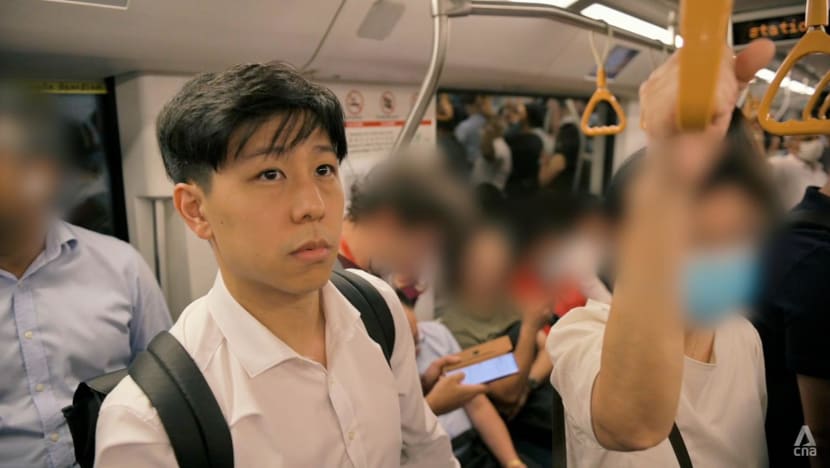
Abrial Pang would feel “guilty”, despite any pain, if he were to take a seat as there are older people on the train. (Photo: Zachary Tang)
SINGAPORE: On some days, Abrial Pang might be racked with pain: seven or eight on a 10-point scale. But even then, he would not dare take a reserved seat on the train, let alone ask for one.
Because if he did, he would be “so worried” someone would “say something”. And if he were to explain, “they’ll never understand what I’m talking about”, said the 31-year-old.
“Even if I were to wear the (May I have a seat please) lanyard, I’m quite sceptical (as to whether) people would give up their seat for me.”
Apart from a limp if his leg is hurting badly, he looks fine. Lean and muscular, in fact. “Everybody just thinks that I’m fit and I’m healthy,” he said. “But I’m not.”

Shanti (not her real name) knows how difficult it can be when one has an invisible disease. She once felt low on sugar and, having run out of glucose tablets, sat on a reserved seat on the train after someone had got up.
The 32-year-old remembers some people giving her a dirty look. “They’d have thought that I would’ve let (older people) take the seat instead. But … I had to sit. If not, I might’ve actually fainted,” she said.
Pang and Shanti have different conditions: One has a form of arthritis and the other has type 1 diabetes.
But they have often been made to feel the same way, whether by friends downplaying their pain, colleagues or employers not understanding why they need so much sick leave or, yes, folks giving them a dirty look on the train.
Even for someone like Louisa Lim, who uses a cane for stability — as advised by her physiotherapist — and for others to take heed of her, there are no offers of a seat on public transport, said the 31-year-old.
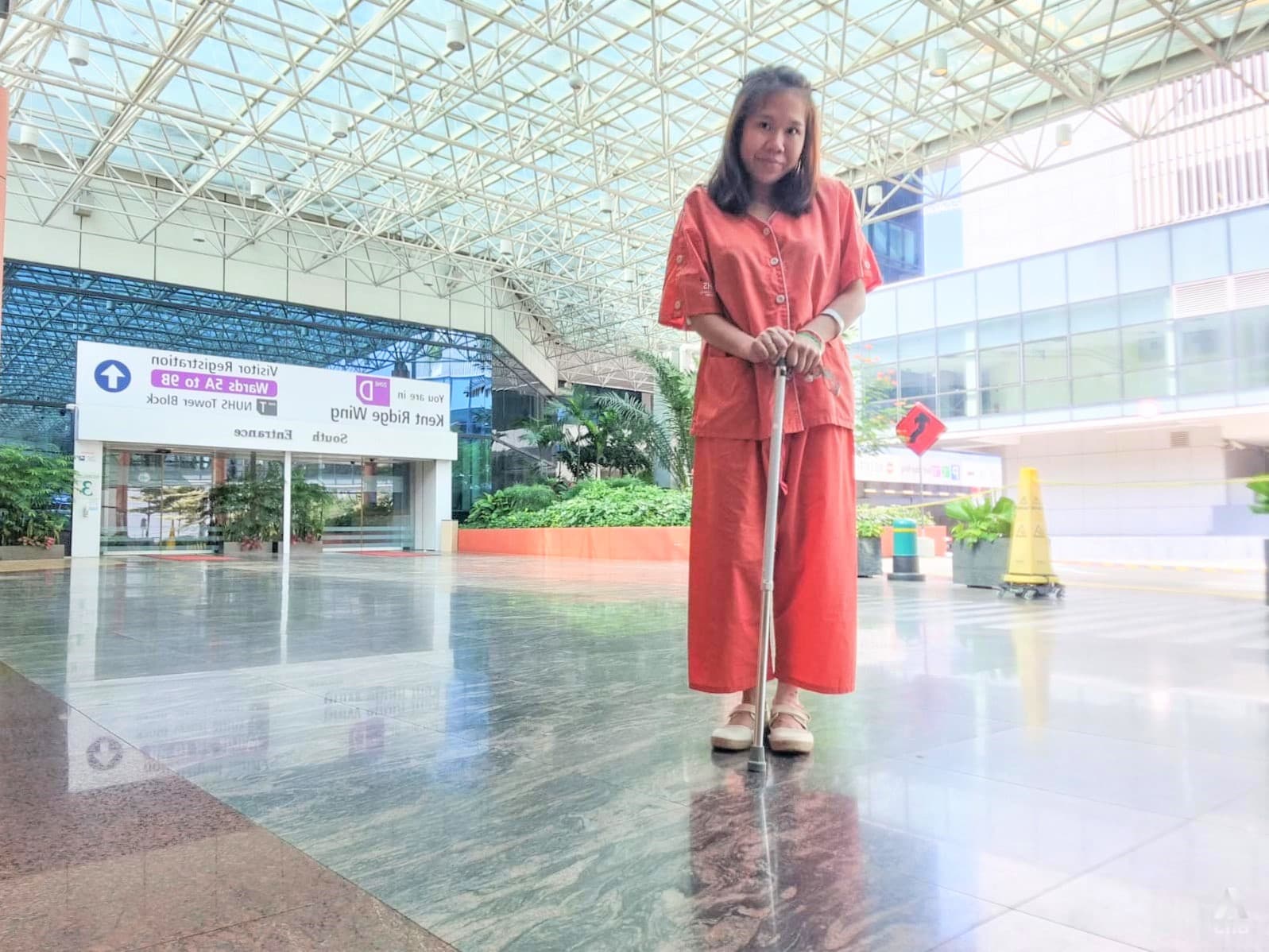
One incident sticks in her mind as to why that is so: She was boarding a bus when an older woman started pushing her way to the front.
Lim, who has a condition that, among other things, makes her unsteady on her feet, told the woman to stop pushing. An argument ensued, with the older commuter stating, “Young people don’t get sick!”
Not only commuters but also some patients in healthcare settings are surprised to see young adults suffering from chronic pain, as Pang found out when he once was waiting for his turn to see his rheumatologist.
An older woman asked him if he was waiting for a grandparent, he recounted. “I said: ‘No, I’m here to see the doctor.’ She smiled in disbelief … (and said): ‘You’re so young. What illness do you have?’”
WATCH: I’m a young adult with an autoimmune disease. Here’s what folks don’t get about chronic pain (15:06)
What Pang, Shanti and Lim have are autoimmune diseases, in which normal cells are attacked by the body’s immune system. According to research, there are about 80 to 100 known autoimmune diseases.
The challenges facing sufferers are far more, and CNA Insider speaks to young adults with different autoimmune conditions about navigating work, relationships and the future.
CHALLENGES AT WORK, SCHOOL
Pang first experienced lower back pain in 2014, which he dismissed as the result of pushing himself too hard in the gym.
Looking back, he realises he may have experienced “flare-ups” — symptoms such as back stiffness, pain of varying intensities and fatigue — between 2014 and 2015. But it was not until 2017, at age 25, that he was diagnosed with ankylosing spondylitis.
What are autoimmune diseases?
Instead of protecting the body, the immune system can mistakenly attack any body part, including organs, joints and skin. Common autoimmune diseases in Singapore include rheumatoid arthritis and lupus.
There are also rare conditions such as vasculitis, which causes inflammation of the blood vessels and is what Sherry Soon, the founder of support group Autoimmune Diseases Singapore, has.
The group has almost 400 members, of which 90 per cent are women as they are likelier than men to develop autoimmune conditions.
Different autoimmune diseases affect sufferers differently, though fatigue and aches are common. Diagnosis and treatment also vary between conditions, but all autoimmune diseases are chronic and lifelong.
“Many of us don’t reach that stage of remission, and we just have to cope with all the different symptoms on a day-to-day basis,” Soon said. “There’s also no cure. … What the medications do is to suppress the immune system and stop the inflammation.”
Many sufferers often regard their conditions as “invisible”. “We often joke that … if there are some visible signs of our autoimmune disease,” Soon said, “people will be able to understand more.”
This autoimmune disease leads to inflammation mainly in the spine and sacroiliac joints, which connect the spine to the pelvic bones, according to rheumatologist Koh Li Wearn, a senior consultant at Tan Tock Seng Hospital.
Between 0.2 and 0.5 per cent of the world’s population has it, and it affects more males. Patients typically develop this condition in their 20s or 30s.
“My first question … was, ‘Can it be cured?’” Pang recalled. “When (the doctor) said that it can’t, … I felt really down.”
He still exercises regularly, to prevent his condition from deteriorating, but must take anti-inflammatory drugs to deal with his flare-ups, which happen about once a month. Even with the painkillers then, he would limp.
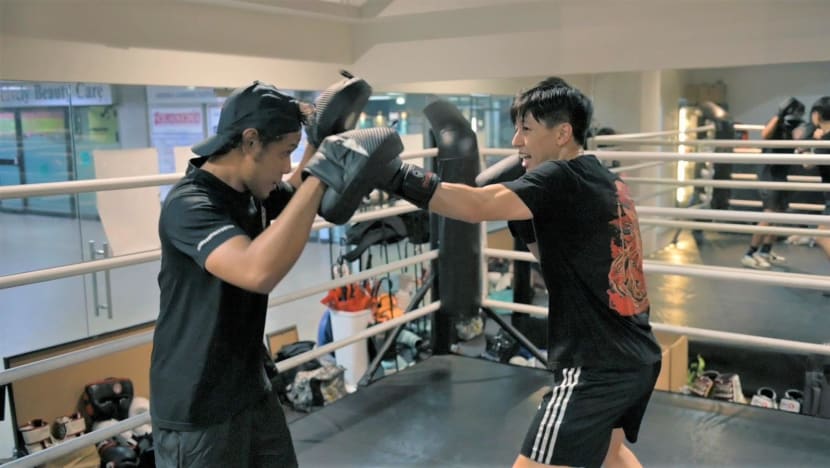
His former colleagues at an advertising agency would ask him why he was “always limping in the office”.
They would assume he was injured playing sport, and he would nod in agreement. “I didn’t want people to pity me,” he told CNA Insider by way of explanation. “I hate (it) the most.”
Whenever he felt unable to bear the pain, he took sick leave — between 12 and 16 days a year, he reckoned.
This soon caught the attention of his former manager. When Pang finally revealed the truth to him, he was understanding as his wife had the same condition.

Nevertheless, Pang made a career switch and became an insurance agent two years ago because he could “relate to people who have issues (that) are a lot more severe (than his)”.
Zoom meetings during the initial course of the pandemic helped him connect with teammates and clients. But as work from home ceased, Pang’s colleagues started noticing his absence.
This time, however, his manager knew about his condition and helped him keep it under wraps initially.
Pang even gave in to peer pressure and switched his backpack for a briefcase after his colleagues had dropped hints about carrying the latter to “suit the image” of an insurance agent.
But carrying the full load on one side of his body affected his condition. He has since reverted to using a backpack.

Someone who adopted a different approach, by telling others about her condition, was Nicole Lim. She was diagnosed 10 years ago with not one but three autoimmune diseases that caused her immune system to attack her liver, bile duct and colon.
At polytechnic, she would brief her classmates to minimise misunderstandings, letting them know as well that she would be away from school periodically.
“They might (have thought) of me as this member who wouldn’t (pull) her weight because of her illness, but I tried my best,” said the 23-year-old.
Even so, she was “marked down” by her peers for not contributing sufficiently to a group assignment.

She took six years, instead of three, to finish her diploma course because of hospitalisations, visits to the doctor, medical tests and a liver transplant in 2018, which all affected her studies.
She also worked with three batches of classmates over the years. “It was … annoying to go back to school and start, stop, start,” she said.
VIEWERS SHARE THEIR EXPERIENCES
CNA Insider’s video of young adults with autoimmune diseases has resonated with viewers, racking up more than 370,000 views on YouTube since last week.
It has also drawn close to 700 comments, including from people sharing their own experiences of living with an invisible medical condition. For many of them, there is continual pain — and the difficulty of dealing with dismissive attitudes.
“Who enjoys taking up to three weeks of (sick leave) … only to come back to a mountain of outstanding work and colleagues giving you an unhappy face because they had to cover (for) you?” wrote Tobias.
“A few of them even sarcastically asked if I’d enjoyed the long break at home. No! I didn’t enjoy it as I was constantly in pain, and nothing gets properly done!
I can’t believe the lack of social awareness and respect for others is so real.”
Rachel Tan, who has systemic lupus erythematosus and hyperthyroidism and gets painful flare-ups in her joints, cited an occasion when she had a job offer and told human resources about her condition.
“The company retracted the job offer because they (were worried) I’d take more than 14 days of sick leave,” wrote the YouTube viewer.
For her, the “toughest thing” when she has flare-ups is having to be in hospital or at home. “It feels like I’m missing out in life,” she added. “I still haven’t fully accepted it.”
Another viewer, T Anderson, was diagnosed with an aggressive rheumatoid arthritis at age 20 and said it was sometimes “too much to bear”.
“I went to law school and graduated but didn’t practise long because I suffered a complete physical and mental burnout,” wrote the viewer, who has lived with the condition for 33 years and thinks “people still don’t understand chronic pain”.
“I stopped caring what people think of me. I’m not giving up (and am) hoping to get (fitter) and … to (practise law) part-time.”
Louisa Lim knows all too well how life can come to such a pass.

Flying to San Francisco on business trips was the norm for her when the self-professed workaholic was in sales at a technology start-up. She was working out “almost every day”, went out drinking and living a 20-something kind of life.
Then in 2021, she developed a persistently high fever. After months of tests, she was diagnosed with small fibre neuropathy, an autoimmune disease that affects the nerves. It often manifests itself as tingling pain across her body.
It was not long before she was diagnosed with another chronic condition: fibromyalgia, which causes pain, fatigue and cognitive issues sometimes known as “fibro fog”.
“I used to cook a lot, but now I forget what the next step is,” she told CNA Insider. “I forget to brush (my) teeth. I forget whether I shampooed my hair when I bathed.”
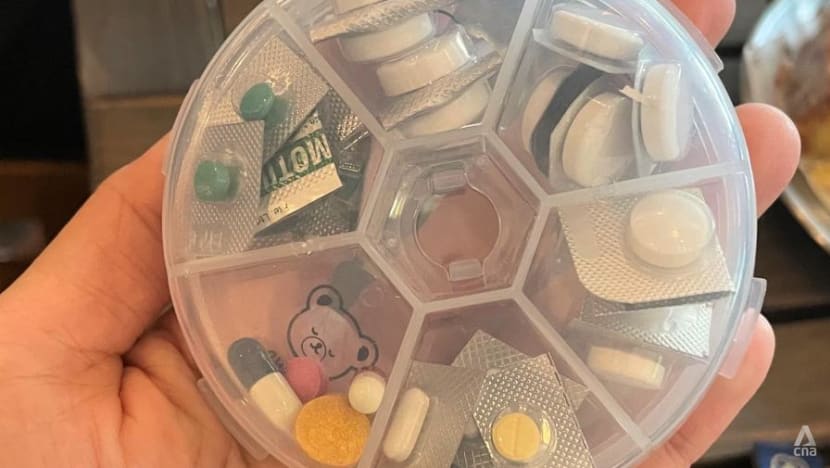
Coming to terms with two chronic diseases has been challenging, and she stopped work as fatigue set in and caused her to typically sleep from 8pm to 4pm the following day.
‘REDUCE THE FINANCIAL BURDEN’
Louisa Lim’s husband is now the sole breadwinner, and she is concerned about paying for their flat when it is ready. He also has an autoimmune disease, Crohn’s, an inflammatory bowel disease he was diagnosed with in adolescence.
While she used to take care of him, it is now his turn to care for her.
For Shanti, having type 1 diabetes means spending “a few thousand dollars” a year, for example on consultation, medication such as insulin and consumables such as the sensors monitoring her glucose level.
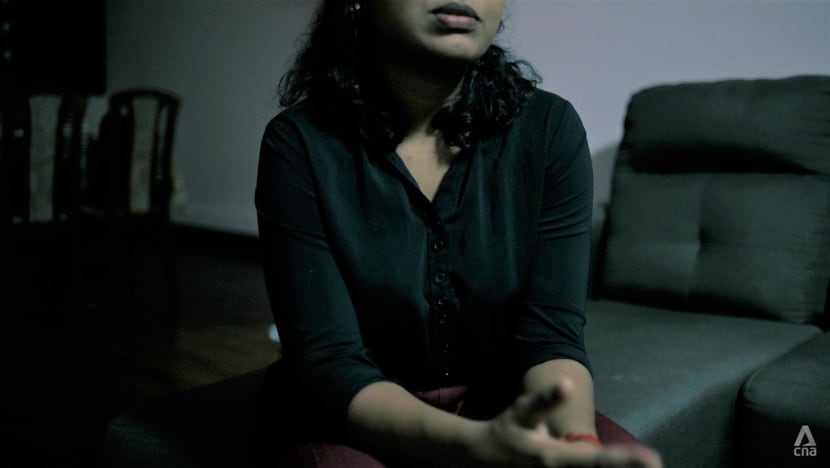
Unlike people with type 2 diabetes, for whom dietary modification and regular exercise may help with glucose control and even lead to remission, people with type 1 diabetes require lifelong insulin replacement, said Singapore General Hospital (SGH) senior consultant in endocrinology Daphne Gardner.
With type 1 diabetes, the immune system destroys insulin-producing cells in the pancreas. In Singapore, 8.5 per cent of the population has diabetes, of which less than 5 per cent has type 1.
SGH sees 450 patients with type 1; at least two-thirds of them are under the age of 35.
In Shanti’s case, her insulin is subsidised but not the sensors, which must be replaced every two weeks. She pays close to S$200 per month for them.
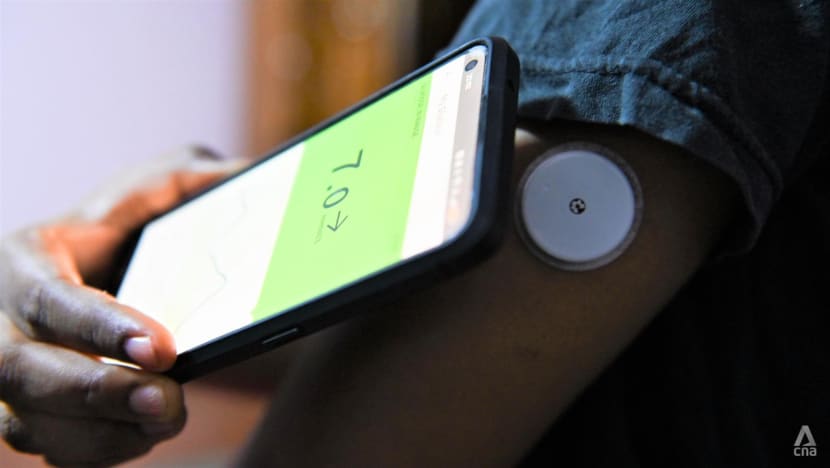
Type 1 diabetes is one of 23 diseases covered by the Health Ministry’s Chronic Disease Management Programme (CDMP), along with some other autoimmune conditions such as allergic rhinitis, psoriasis and rheumatoid arthritis.
CDMP patients can use their MediSave savings to claim 85 per cent of their outpatient bills, up to S$700 per year.
And Sherry Soon, 42, the founder of support group Autoimmune Diseases Singapore, would like the scheme to cover more autoimmune diseases.
“We need to see specialists for our regular follow-ups,” she said. “If (we’re) under this scheme, it can reduce the financial burden and at least (we could) use a part of our MediSave to pay for these expenses.”
Insurance cover for those with autoimmune diseases
MediShield Life, the government’s basic medical insurance plan for all Singaporeans and permanent residents, covers pre-existing conditions.
However, individuals with certain pre-existing conditions such as systemic lupus erythematosus, an autoimmune disease, must pay an additional premium of 30 per cent for the first 10 years. After that, these individuals will pay the same premium as others in their age group.
According to financial consultant Luke (not his real name), who has been in the life insurance industry since 1995, these are the possible outcomes when a young adult with an autoimmune disease tries to buy a health insurance policy:
1. The insurer will impose an additional amount on the premium. It is known as loading and can be as much as 50 per cent of the total premium payable.
2. The insurer will impose an exclusion. If a certain ailment were to occur, the insurer is not liable for that claim.
3. The insurer will impose both a loading and an exclusion.
4. The insurer will postpone the case to a later date or indefinitely until the prospective client has proof that the autoimmune condition has been removed.
5. The insurer will reject the application.
How advanced the disease can become is “a big unknown to insurers”, Luke said. “And insurers don’t like to work with unknown risks.”
HIGH ASPIRATIONS, FOR WORK AND LOVE
There are several support groups in the Republic for people with autoimmune diseases, such as the Crohn’s and Colitis Society of Singapore, the Lupus Association (Singapore) and the Psoriasis Association of Singapore.
Pang joined one in the National Arthritis Foundation four years after his diagnosis and saw fellow sufferers in their 50s and 60s who had children and lived normal lives.
It was a turning point in his autoimmune journey, and he finally came to terms with his condition.
The self-motivated individual aims to lead a team in future, and his manager, Augustine Seah, is aware of his ambition. “His aspirations are still as (high) as everyone (else’s),” Seah said. “He wants to push himself.”
Seah sounded a note of caution, however. “If you want to start managing people, that’d require you to be around,” he said. “There are just days (when) he can’t, and (that’s) something we need to manage along the way.”
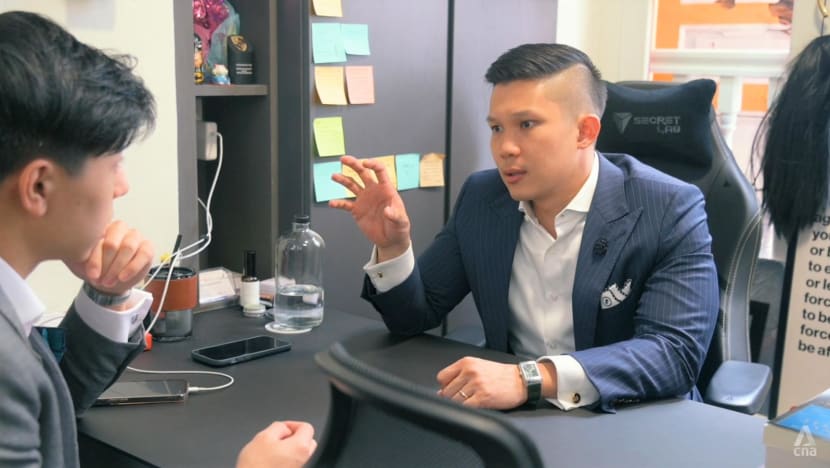
Nevertheless, online meetings and asynchronous work, which became the norm during the pandemic, can help an organisation with productivity, said Soon. “It really benefitted some of us, because right now (we) can still contribute.”
Pang’s mother, Koh Beng Choo, is particularly worried about his future — on the domestic front. “Let’s say he gets married down the road and … has his own children,” she said. “Will (the disease be passed) on to his children?”
He knows there is a hereditary risk but considers that the “chances are … quite low”, since none of his immediate family has ankylosing spondylitis.
“There (are) so many other worse things that could happen to someone,” he said. “If my kid (were to have) it, I think he or she should be positive enough to go through it and live life to the fullest.”
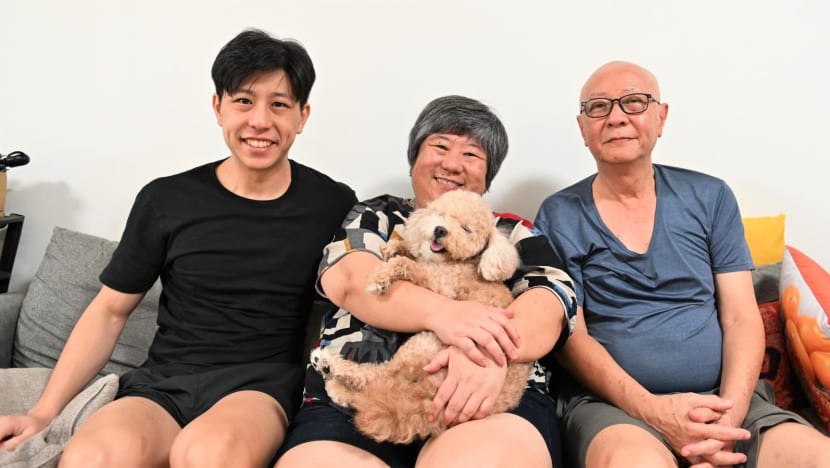
He would like to have children after marriage, but first, he must find “a partner who’s very understanding”, he said.
“One of my criteria before I get into relationships is that (potential partners) need to know my illness. They need to know that I’m not always 100 per cent (well).”
His ex knew about his condition. There were times when she would physically support him as he walked around in pain. At other times when he experienced a flare-up, he would grin and bear it on a special night out.
But the relationship did not pan out, though not because of his condition, according to Pang.
As for Nicole Lim, finding a special someone was the furthest thing on her mind when she was a teenager battling three autoimmune diseases and a failing liver.
But after her liver transplant gave her a new lease of life, she started caring about her appearance. She bought dresses and make-up in her early 20s.
She went out on a date after including some details of her illness on her dating app profile. Her date knew of her condition, but they did not “click”, she said.
“I’m a bit body-conscious as well, because I have scarring from the transplant. And I’ve got stretch marks from the sudden weight gain from the steroids (to suppress her immune system).”
Like Pang, she said she must find someone who is “super understanding”.
While she was previously jealous of her peers, she has since come to terms with her diseases, which she now keeps under control with more than 10 types of medication. In fact, she has published a book about her experiences.
In sharing her story, she seeks what others with autoimmune diseases perhaps also want from society. “Don’t look at what I can’t do,” she said. “Focus on what I can do.”

















